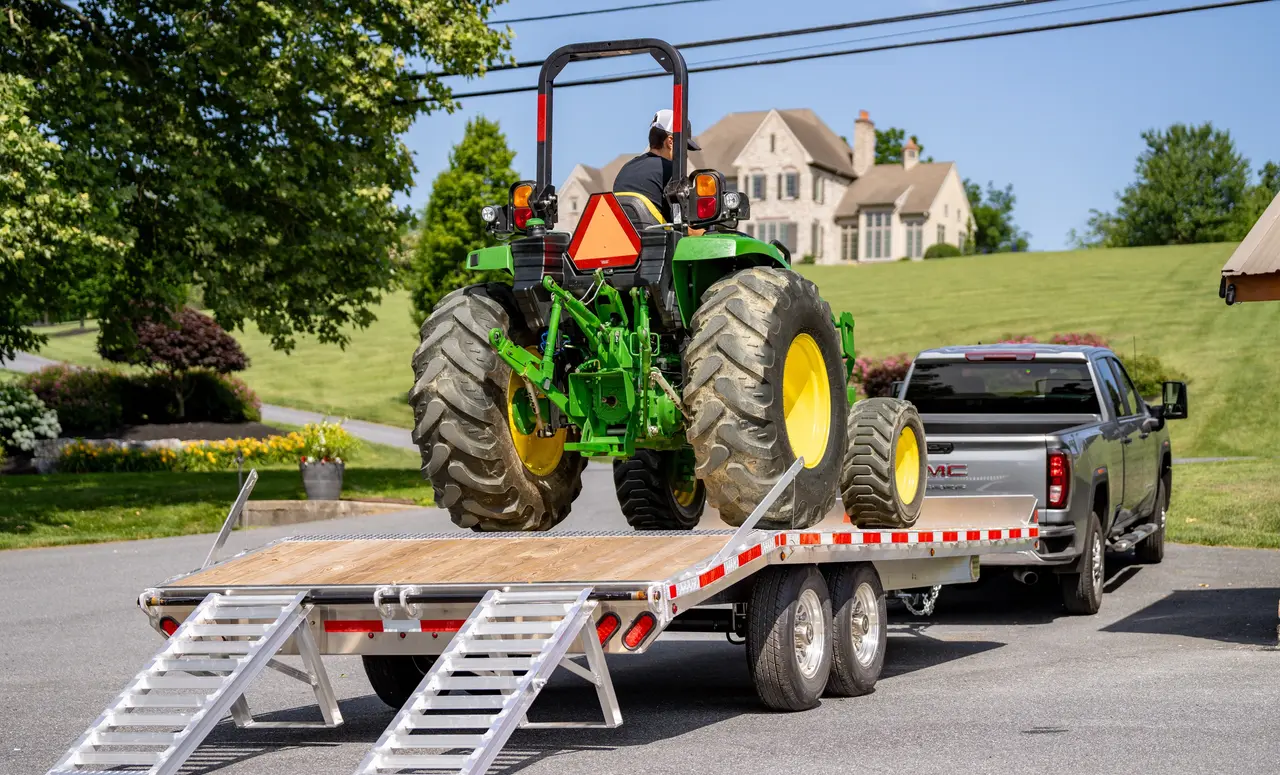Transporting heavy machinery presents a unique set of challenges, from ensuring the stability of the load to navigating traffic safely. Equipment trailers play a vital role in this process, designed with safety in mind. In this blog, we’ll explore how these trailers keep heavy machinery secure and what measures are taken to prevent accidents during transit. Whether you’re in the transportation industry or just curious about how it all works, stay tuned for an easy-to-understand breakdown.
Understanding the Role of Equipment Trailers
Equipment trailers are not just about moving heavy machinery from point A to B; they are intricately designed to handle the complexities and stresses of heavy loads. The foremost goal of these trailers is to ensure that the machinery is not only transported efficiently but also safely, mitigating potential hazards on the road.
At their core, these trailers are built with robust materials capable of withstanding substantial weights, but there’s more to them than sheer strength. Designers factor in the dynamics of road travel, considering how acceleration, braking, and turns can affect the load. This understanding drives the development of features aimed at keeping the machinery stable throughout the journey.
Key Safety Features of Equipment Trailers
One significant safety feature is the use of low-loader trailers, which have a low center of gravity. This design significantly reduces the risk of toppling, especially during sharp turns or when navigating uneven terrains. Moreover, many trailers are equipped with hydraulic ramps for safe and efficient loading and unloading, preventing machinery from tipping over.
Another essential feature is the incorporation of tie-down points and locking mechanisms. These components are critical for securing the machinery to the trailer, ensuring that it remains secure even when subjected to rigorous road transport. These mechanisms prevent both horizontal and vertical shifting, which is crucial for the safety of not just the load, but also other drivers on the road.
Checking and Balancing the Load
Equally important is the process of ensuring that the load is correctly balanced on the trailer. An unevenly balanced load can cause handling difficulties, potentially leading to accidents. Operators are trained to distribute the weight evenly, often making use of professional loading equipment and techniques to position the machinery in the most stable manner possible.
Routine checks are a critical part of the preparation phase, where drivers assess the load’s distribution to confirm that it conforms to safety standards. This often involves adjusting the position of the heavy machinery or even utilizing counterweights to achieve optimal balance. Such meticulous preparations are essential for safe transportation.
Securement Techniques for Heavy Machinery
Securing heavy machinery for transport goes beyond simple tie-downs. It requires an in-depth understanding of load dynamics and the appropriate use of supplementary securing devices like chains, straps, and binders, all of which must be rated for the specific weight of the load. These devices are checked for wear and damage before use, ensuring maximum reliability.
Operators also follow strict guidelines for the number of tie-down points based on the weight and size of the machinery. The aim is to eliminate any motion that could lead to damage or destabilization. It’s a meticulous process that significantly enhances safety during transportation.
Routine Inspection and Maintenance
The integrity of an equipment trailer is fundamental to its safety performance. Therefore, routine inspections and maintenance are non-negotiable. These checks cover everything from the physical condition of the trailer to the functionality of its safety features, ensuring that any potential issues are identified and addressed well before the trailer hits the road.
Maintenance routines are carefully documented, creating a track record that helps in predicting potential failures before they occur. This preemptive approach to upkeep is crucial in avoiding accidents and ensuring the longevity of the equipment.
Training and Regulations for Operators
Operators of equipment trailers receive specialized training that covers a wide range of safety topics, from load balancing to emergency response. This training ensures that they are not only proficient in the technical aspects of their job but also aware of the safety protocols that must be followed at all times.
In addition to company-specific training programs, operators must adhere to national and international regulations concerning the transport of heavy machinery. These regulations set the standard for safety practices in the industry, contributing to the overall safety of equipment trailers.
Ensuring Safety in Heavy Machinery Transportation
Ensuring the safe transport of heavy machinery isn’t just about having the right equipment; it’s about utilizing that equipment effectively. Equipment trailers are engineered with several safety features and protocols that, when used properly, greatly minimize the risks associated with transporting heavy loads. Awareness, preparation, and adherence to safety guidelines are paramount. We hope this article has thoroughly explained the crucial role equipment trailers play in the safe transportation of heavy machinery, providing insight into the engineering and thoughtful design that goes into every journey.


